This is a preprint.
Disrupting CD38-driven T cell dysfunction restores sensitivity to cancer immunotherapy
- PMID: 38405985
- PMCID: PMC10888727
- DOI: 10.1101/2024.02.12.579184
Disrupting CD38-driven T cell dysfunction restores sensitivity to cancer immunotherapy
Abstract
A central problem in cancer immunotherapy with immune checkpoint blockade (ICB) is the development of resistance, which affects 50% of patients with metastatic melanoma1,2. T cell exhaustion, resulting from chronic antigen exposure in the tumour microenvironment, is a major driver of ICB resistance3. Here, we show that CD38, an ecto-enzyme involved in nicotinamide adenine dinucleotide (NAD+) catabolism, is highly expressed in exhausted CD8+ T cells in melanoma and is associated with ICB resistance. Tumour-derived CD38hiCD8+ T cells are dysfunctional, characterised by impaired proliferative capacity, effector function, and dysregulated mitochondrial bioenergetics. Genetic and pharmacological blockade of CD38 in murine and patient-derived organotypic tumour models (MDOTS/PDOTS) enhanced tumour immunity and overcame ICB resistance. Mechanistically, disrupting CD38 activity in T cells restored cellular NAD+ pools, improved mitochondrial function, increased proliferation, augmented effector function, and restored ICB sensitivity. Taken together, these data demonstrate a role for the CD38-NAD+ axis in promoting T cell exhaustion and ICB resistance, and establish the efficacy of CD38 directed therapeutic strategies to overcome ICB resistance using clinically relevant, patient-derived 3D tumour models.
Keywords: 3D microfluidic culture; CD38; NAD+; PD-1; T cell exhaustion; cytokines; immunotherapy; organotypic tumour spheroids.
Conflict of interest statement
R.W.J. is a member of the advisory board for and has a financial interest in Xsphera Biosciences Inc., a company focused on using ex vivo profiling technology to deliver functional, precision immune-oncology solutions for patients, providers, and drug development companies. R.W.J. has received honoraria from Incyte (invited speaker), G1 Therapeutics (advisory board), Bioxcel Therapeutics (invited speaker). R.W.J. has ownership interest in U.S. patents US20200399573A9 and US20210363595A1. R.W.J.'s interests were reviewed and are managed by Massachusetts General Hospital and Mass General Brigham in accordance with their conflict-of-interest policies. A.M has served a consultant/advisory role for Third Rock Ventures, Asher Biotherapeutics, Abata Therapeutics, ManaT Bio, Flare Therapeutics, venBio Partners, BioNTech, Rheos Medicines and Checkmate Pharmaceuticals, is currently a part-time Entrepreneur in Residence at Third Rock Ventures, is an equity holder in ManaT Bio, Asher Biotherapeutics and Abata Therapeutics, and has received research funding support from Bristol-Myers Squibb. A.M.’s interests were reviewed and are managed by Massachusetts General Hospital and Mass General Brigham in accordance with their conflict-of-interest policies. J.M.S., L-C.C, N.S, M.M., N.N., R.S. are current employees with Teiko.bio and own stock. E E. and S.A.E. were employed with Teiko.bio in the past 2 years and own stock. R.S. and M.H.S. are Teiko.bio’s co-founders and R.S. serves on the company board. M.H.S. serves as an advisor for Teiko.bio and owns stock. M.E.W. worked as a contractor for Teiko.bio during this project. M.H.S. has received a speaking honorarium from Standard BioTools and Kumquat Bio, has been a paid consultant for Five Prime, Ono, January, Earli, Astellas, and Indaptus, and has received research funding from Roche/Genentech, Pfizer, Valitor, and Bristol Myers Squibb.X.W. and C.R.F. report a patent on the B7-H3 CAR T cells (US10519214B2). K.T.F. serves on the Board of Directors of Clovis Oncology, Strata Oncology, Kinnate, and Scorpion Therapeutics; Scientific Advisory Boards of PIC Therapeutics, Apricity, C-Reveal, Tvardi, ALX Oncology, xCures, Monopteros, Vibliome, Karkinos, Soley Therapeutics, Alterome, Immagene, and intrECate; consultant to Nextech, Takeda, Novartis, Transcode Therapeutics, and Roche/Genentech. R.T.M. consults for Bristol Myers Squibb. G.M.B. has sponsored research agreements through her institution with: Olink Proteomics, Teiko Bio, InterVenn Biosciences, and Palleon Pharmaceuticals. She has served on advisory boards for: Iovance, Merck, Nektar Therapeutics, Novartis, and Ankyra Therapeutics. She consults for: Merck, InterVenn Biosciences, Iovance, and Ankyra Therapeutics. She holds equity in Ankyra Therapeutics. M.S.F received funding from Calico Life Sciences, Bristol-Myers Squibb, Istari Oncology and served as a consultant for Galvanize Therapeutics. N.H. holds equity in BioNTech and is an advisor for Related Sciences/Danger Bio, Repertoire Immune Medicines and CytoReason, and receives research funding from Calico Life Sciences and Bristol-Myers Squibb. D.L serves on the scientific advisory board for Oncovalent Therapeutics, and received honorariums from Genentech.
Figures

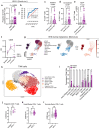

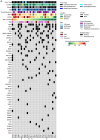
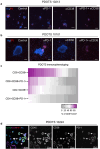


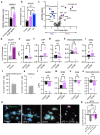
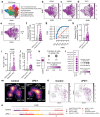


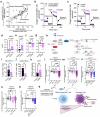
References
-
- Budimir N., Thomas G. D., Dolina J. S. & Salek-Ardakani S. Reversing T-cell Exhaustion in Cancer: Lessons Learned from PD-1/PD-L1 Immune Checkpoint Blockade. Cancer Immunol Res 10, 146–153 (2022). - PubMed
Publication types
Grants and funding
LinkOut - more resources
Full Text Sources
Research Materials
